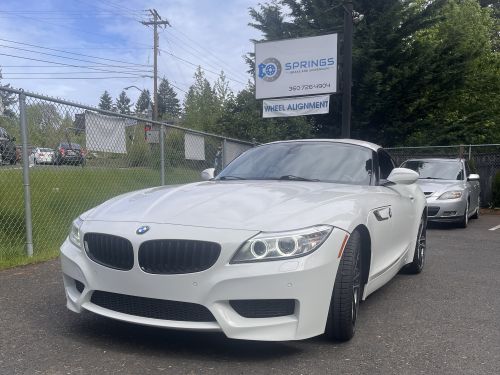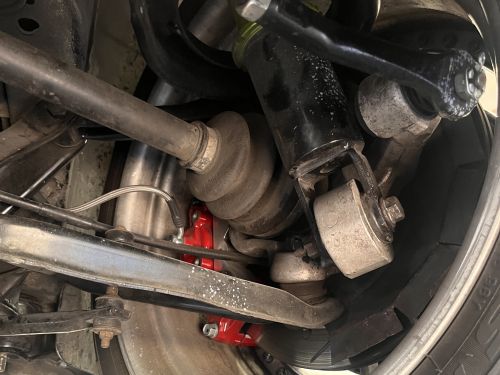Your vehicle’s suspension system is one of the most critical elements affecting ride comfort, handling, and overall safety. It absorbs shocks from the road, maintains tire contact with the ground, and ensures smooth, controlled driving in all conditions. Whether you’re navigating city streets or tackling off-road trails, a properly functioning suspension system is what keeps your drive stable and comfortable.
Understanding the components of your vehicle’s suspension can help you recognize issues early and ensure long-term vehicle performance.

Call Springs Brake and Suspension Today!
We are Your Neighbor Recommended Auto Shop
The Purpose of the Suspension System
The suspension system connects your vehicle’s body to its wheels, balancing comfort and control. Its main goals are to:
Absorb Road Impacts: Reduce the jarring effects of bumps and potholes.
Maintain Tire Contact: Keep tires in consistent contact with the road surface for traction and safety.
Stabilize Handling: Prevent body roll and swaying when cornering or braking.
Without a properly functioning suspension, even the best tires and brakes can’t perform effectively.
Key Suspension System Components
Shock Absorbers
Controlling the Motion
Shock absorbers, often referred to as “shocks,” work alongside the springs to dampen the bouncing motion caused by uneven roads. Their primary job is to control how quickly the springs compress and rebound, ensuring that your tires maintain steady contact with the road.
Worn or leaking shocks can lead to excessive bouncing after hitting bumps, nose-diving when braking, and unstable handling at higher speeds.
Replacing shocks as part of regular suspension maintenance ensures consistent comfort and safety.
Control Arms, Bushings, and Ball Joints
The Connective Components
While shocks, struts, and springs handle the vertical motion, control arms, bushings, and ball joints allow your wheels to move up and down independently.
- Control arms connect the suspension to the vehicle’s frame.
- Bushings cushion metal components to reduce vibration and noise.
- Ball joints act like pivots, enabling smooth steering and suspension movement.
When these components wear out, you might hear clunking noises, experience uneven tire wear, or notice vibrations while driving.
Springs
The Foundation of Comfort
Springs are the backbone of the suspension system. They support the vehicle’s weight and absorb road impacts by compressing and expanding as the car moves. There are three primary types of springs:
- Coil Springs: The most common type, found in most passenger cars. They provide a balanced combination of comfort and control.
- Leaf Springs: Typically used in trucks and heavy-duty vehicles, offering strength and load-bearing capability.
- Torsion Bars: These use twisting motion instead of compression to absorb shock and are often found in older or specialized vehicles.
Struts
A Combination of Strength and Support
Struts are structural components that combine a shock absorber and coil spring into a single unit. They not only control movement like shocks but also support part of the vehicle’s weight and play a role in alignment and steering geometry.
Because they affect both handling and ride height, worn struts can cause alignment problems, uneven tire wear, and reduced braking efficiency. If your vehicle dives forward when braking or feels unstable when turning, your struts may need replacement.
Why Suspension Maintenance Matters
Over time, normal wear and tear, potholes, and heavy loads can affect suspension performance. Neglecting maintenance can lead to:
- Decreased ride comfort
- Longer stopping distances
- Uneven tire wear
- Poor handling and increased safety risks
Regular suspension inspections and timely replacement of worn parts ensure your vehicle performs efficiently, maximizing both comfort and control.
Why Choose Springs Brake and Suspension
At Springs Brake and Suspension, we specialize in comprehensive suspension repair and maintenance services. Our experienced technicians use advanced diagnostic tools to identify issues quickly and accurately, restoring your vehicle’s stability and ride comfort.
From shocks and struts to complete suspension overhauls, our team ensures every repair meets the highest standards of quality and reliability.
Protect Your Ride: The Role of Suspension in Vehicle Control
Your suspension system is more than just a comfort feature—it’s a vital part of your vehicle’s performance and safety. Understanding how springs, shocks, and struts work together helps you recognize signs of wear early and take proactive steps to maintain your car’s stability and control.
When you need professional care, trust Springs Brake and Suspension to provide expert service that keeps your ride smooth, responsive, and road-ready for miles to come.

